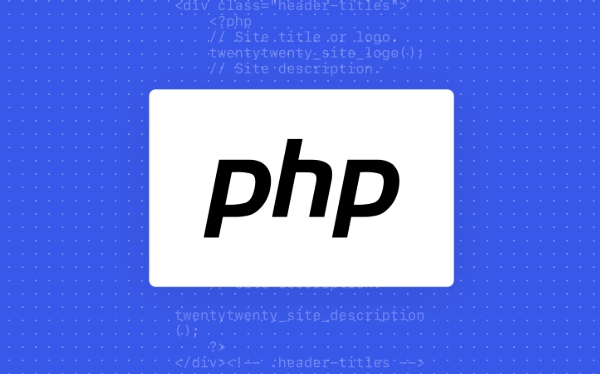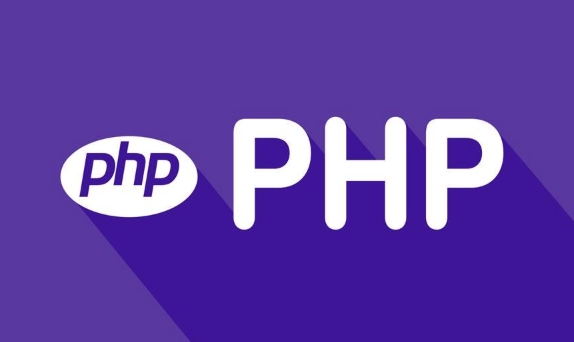The Evolution of PHP: A Journey Through its Key Versions
Jul 16, 2025 am 02:45 AMPHP has gone through several key versions, each of which has brought significant improvements. 1. PHP 3 introduced Zend Engine and preliminary object-oriented programming support, making PHP a real programming language; 2. PHP 5 completely rewrites the object model, adds interfaces, abstract classes, access control and other features, and has built-in support for SQLite, SOAP and JSON; 3. PHP 7 has greatly improved performance through Zend Engine III, introduced scalar type declarations, empty merging operators and other features, and optimized error handling mechanisms; 4. PHP 8 introduced modern syntax features such as JIT compilation, union types, and named parameters to further improve performance and development experience. These versions drive PHP from simple CGI scripts to a modern, efficient universal programming language.

PHP has come a long way since its humble beginnings as a simple set of CGI scripts. Over the years, it evolved into a full-fledged programming language used by millions of developers worldwide to build dynamic websites and applications. The journey of PHP is marked by major version updates that introduced new features, improved performance, and modernized the language.

Here's a closer look at some of the most important versions in PHP's evolution and what made them significant.
PHP 3 – The Birth of a Real Programming Language
Before PHP 3, PHP was mostly a tool for basic web tasks. But with PHP 3, it started becoming something more serious. This version introduced a real parser and better support for object-oriented programming (OOP), which made writing larger and more organized code possible.

It also brought a modular design, allowing developers to extend PHP using modules like MySQL or LDAP. That flexibility helped PHP grow beyond personal homepages — where the name originally came from — and into a language suitable for professional development.
Another big change was the introduction of the Zend Engine in PHP 3. It laid the foundation for future versions and greatly improved how PHP handled scripts behind the scenes.

PHP 5 – A Major Step Forward
PHP 5 was a game-changer. Released in 2004, it brought a complete rewrite of the object model, making OOP much more powerful and usable. Features like:
- Interfaces
- Abstract classes
- Visibility control (public/protected/private)
- Constructors and destructors
- Exceptions
This shift towards stronger OOP support allowed developers to write cleaner, reusable, and scalable code.
PHP 5 also included built-in support for popular extensions like SQLite, SOAP, and JSON, which were becoming essential for modern web development. With these tools readily available, building complex web apps become more efficient.
One thing worth noting: PHP 5 went through several iterations (like 5.2, 5.3, 5.4, etc.), each adding useful features such as late static binding, namespaces, and traits.
PHP 7 – Speed, Stability, and Modernization
After the long life of PHP 5, PHP 7 arrived in 2015 and brought one of the biggest performance boosts in PHP history. Thanks to a reworked Zend Engine (now called Zend Engine III), PHP 7 ran about twice as fast as PHP 5.6 and used less memory.
Besides speed, PHP 7 cleaned up the language and removed outdated features that had become problematic or confusing. Some notable changes included:
- Scalar type declarations
- Return type declarations
- Null coalescing operator (
??) - Spaceship operator (
)
These additions made code safer, easier to read, and more predictable — especially in large projects.
PHP 7 also introduced the concept of "engine exceptions" and improved error handling, helping developers catch and fix issues earlier.
PHP 8 – Modern Features and Better Developer Experience
The latest major version, PHP 8, launched in late 2020 and continued pushing PHP towards a more modern and expressive syntax. One of the standout features was JIT (Just-In-Time Compilation) , which further improved performance for certain types of workloads.
Other key improvements included:
- Union types
- Named arguments
- Constructor property promotion
- Match expressions
- Attributes (annotations)
These features bring PHP more in line with other modern languages like Python or JavaScript, while still keeping its familiar syntax and structure.
PHP 8 also focused on cleaning up inconsistencies and improving internal logic, making the language feel more cohesive and mature.
PHP's evolution shows how a small scripting tool grow into a robust language capable of powering everything from blogs to enterprise-level systems. Each major version addressed real-world problems faced by developers, and the result is a language that's both flexible and powerful.
If you're just starting out or upgrading an old project, knowing which version introduced what can help you make better decisions about what features to use and how to structure your code.
Basically that's it.
The above is the detailed content of The Evolution of PHP: A Journey Through its Key Versions. For more information, please follow other related articles on the PHP Chinese website!

Hot AI Tools

Undress AI Tool
Undress images for free

Undresser.AI Undress
AI-powered app for creating realistic nude photos

AI Clothes Remover
Online AI tool for removing clothes from photos.

Clothoff.io
AI clothes remover

Video Face Swap
Swap faces in any video effortlessly with our completely free AI face swap tool!

Hot Article

Hot Tools

Notepad++7.3.1
Easy-to-use and free code editor

SublimeText3 Chinese version
Chinese version, very easy to use

Zend Studio 13.0.1
Powerful PHP integrated development environment

Dreamweaver CS6
Visual web development tools

SublimeText3 Mac version
God-level code editing software (SublimeText3)
 PHP Variable Scope Explained
Jul 17, 2025 am 04:16 AM
PHP Variable Scope Explained
Jul 17, 2025 am 04:16 AM
Common problems and solutions for PHP variable scope include: 1. The global variable cannot be accessed within the function, and it needs to be passed in using the global keyword or parameter; 2. The static variable is declared with static, and it is only initialized once and the value is maintained between multiple calls; 3. Hyperglobal variables such as $_GET and $_POST can be used directly in any scope, but you need to pay attention to safe filtering; 4. Anonymous functions need to introduce parent scope variables through the use keyword, and when modifying external variables, you need to pass a reference. Mastering these rules can help avoid errors and improve code stability.
 How to handle File Uploads securely in PHP?
Jul 08, 2025 am 02:37 AM
How to handle File Uploads securely in PHP?
Jul 08, 2025 am 02:37 AM
To safely handle PHP file uploads, you need to verify the source and type, control the file name and path, set server restrictions, and process media files twice. 1. Verify the upload source to prevent CSRF through token and detect the real MIME type through finfo_file using whitelist control; 2. Rename the file to a random string and determine the extension to store it in a non-Web directory according to the detection type; 3. PHP configuration limits the upload size and temporary directory Nginx/Apache prohibits access to the upload directory; 4. The GD library resaves the pictures to clear potential malicious data.
 Commenting Out Code in PHP
Jul 18, 2025 am 04:57 AM
Commenting Out Code in PHP
Jul 18, 2025 am 04:57 AM
There are three common methods for PHP comment code: 1. Use // or # to block one line of code, and it is recommended to use //; 2. Use /.../ to wrap code blocks with multiple lines, which cannot be nested but can be crossed; 3. Combination skills comments such as using /if(){}/ to control logic blocks, or to improve efficiency with editor shortcut keys, you should pay attention to closing symbols and avoid nesting when using them.
 How Do Generators Work in PHP?
Jul 11, 2025 am 03:12 AM
How Do Generators Work in PHP?
Jul 11, 2025 am 03:12 AM
AgeneratorinPHPisamemory-efficientwaytoiterateoverlargedatasetsbyyieldingvaluesoneatatimeinsteadofreturningthemallatonce.1.Generatorsusetheyieldkeywordtoproducevaluesondemand,reducingmemoryusage.2.Theyareusefulforhandlingbigloops,readinglargefiles,or
 Tips for Writing PHP Comments
Jul 18, 2025 am 04:51 AM
Tips for Writing PHP Comments
Jul 18, 2025 am 04:51 AM
The key to writing PHP comments is to clarify the purpose and specifications. Comments should explain "why" rather than "what was done", avoiding redundancy or too simplicity. 1. Use a unified format, such as docblock (/*/) for class and method descriptions to improve readability and tool compatibility; 2. Emphasize the reasons behind the logic, such as why JS jumps need to be output manually; 3. Add an overview description before complex code, describe the process in steps, and help understand the overall idea; 4. Use TODO and FIXME rationally to mark to-do items and problems to facilitate subsequent tracking and collaboration. Good annotations can reduce communication costs and improve code maintenance efficiency.
 Quick PHP Installation Tutorial
Jul 18, 2025 am 04:52 AM
Quick PHP Installation Tutorial
Jul 18, 2025 am 04:52 AM
ToinstallPHPquickly,useXAMPPonWindowsorHomebrewonmacOS.1.OnWindows,downloadandinstallXAMPP,selectcomponents,startApache,andplacefilesinhtdocs.2.Alternatively,manuallyinstallPHPfromphp.netandsetupaserverlikeApache.3.OnmacOS,installHomebrew,thenrun'bre
 How to access a character in a string by index in PHP
Jul 12, 2025 am 03:15 AM
How to access a character in a string by index in PHP
Jul 12, 2025 am 03:15 AM
In PHP, you can use square brackets or curly braces to obtain string specific index characters, but square brackets are recommended; the index starts from 0, and the access outside the range returns a null value and cannot be assigned a value; mb_substr is required to handle multi-byte characters. For example: $str="hello";echo$str[0]; output h; and Chinese characters such as mb_substr($str,1,1) need to obtain the correct result; in actual applications, the length of the string should be checked before looping, dynamic strings need to be verified for validity, and multilingual projects recommend using multi-byte security functions uniformly.
 Learning PHP: A Beginner's Guide
Jul 18, 2025 am 04:54 AM
Learning PHP: A Beginner's Guide
Jul 18, 2025 am 04:54 AM
TolearnPHPeffectively,startbysettingupalocalserverenvironmentusingtoolslikeXAMPPandacodeeditorlikeVSCode.1)InstallXAMPPforApache,MySQL,andPHP.2)Useacodeeditorforsyntaxsupport.3)TestyoursetupwithasimplePHPfile.Next,learnPHPbasicsincludingvariables,ech






